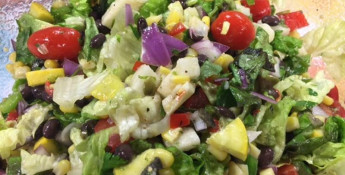By Eryn Carter on October 6, 2020
Four Things You Need to Know to Plan a Healthy Menu

As a Registered Dietitian, I am asked many questions on how to live a healthier lifestyle. These range from what foods are good and bad, should sugar be eliminated from the diet, is organic healthier than conventional, etc. Overwhelmingly most popular, though, are questions on meal planning to promote a healthy diet. The answer is not as straight forward as some may think, but there are a few tips to improve your daily menu:
Know what heathy means for you.
The term "healthy" often leads consumers to believe there is a right and wrong regarding foods and diet. While a black and white answer would be simple, healthy means something different for everyone. Low carb, heart healthy, low calorie, nutrient dense are all common words you may see when searching for healthy recipes. Each can be beneficial in certain cases, but not necessary for every case. Medical conditions, health goals and lifestyle factors all impact what individuals need to be healthy. Before planning your menu, evaluate what specific needs you have and what menu choices would be best for your diet.
Incorporate carbs, protein, fats, fiber.
A good mix of these food components are important for many body processes as well as having energy and feeling satiated. Ratios of these items may change depending on individualized health factors, but in general it is important to incorporate each into every meal. See this article for more details on why these are important and examples of where to find them.
When in doubt, add fruits and vegetables.
USDA MyPlate guidelines state the average person needs one to three cups of vegetables and one to two cups of fruit each day, varying with each person’s individual needs. In general, try to aim for at least five servings total. Incorporating fruits and vegetables at each meal is a good way to hit that goal. Varying colors of produce have different nutrient profiles, so making your meals colorful is also important.
Alter recipes you like.
Have you ever packed a lunch of chicken, brown rice and broccoli, looked at it, then decided to swing through the drive through? Too often when planning menus, favorite meals considered less healthy are thrown out and meals that aren’t appealing are added in. In order to make sustainable change, menu items need to be something you will actually eat. Making small swaps to your favorite meals is a great way to incorporate healthy menu options that are palatable. Use plain Greek yogurt instead of sour cream and 10 percent fat beef in a taco salad. Alter pasta dishes by using half spaghetti squash, half noodles and add extra vegetables to the sauce such as green and red bell pepper, spinach or diced zucchini.





